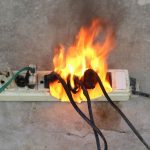Have you thought that your radiators are pumping 50% of their power into the wall they’re hanging from? It seems like such a waste that your heating system is working so hard to heat your walls. Installing insulation behind a radiator can significantly reduce heat loss through walls and increase comfort in your home. If you’re looking to reduce the running costs of your fixtures but don’t want to sacrifice comfort, then a reflector can be a quick and cost-effective solution. Here is the best insulation to use!
Content of the page

Insulation behind radiator: Why put aluminum behind a radiator?
Cast iron radiators are well known for their incredible ability to generate consistent, pleasant heat. But if your old house is poorly insulated, a large part of the energy emanating goes directly outside. However, do not despair! Aluminum foil reflectors are a simple and inexpensive way to insulate walls behind radiators and reflect heat back into your living space.
In fact, radiator reflectors (also called radiant barriers, insulating films for radiators) insulate behind the appliances and “bounce” the heat back into the room. I know what you think. “Can I really save on my heating bills by insulating behind radiators with reflectors? ” Good question ! And here is the answer!
According to experts, you can save up to 25% on your heating costs for houses with good wall insulation. For poorly insulated homes, radiator reflectors can save around 8%.

Indeed, the best insulator behind radiator is an aluminum sheet placed at the back of the device. It reflects heat back into the room instead of letting it escape unnecessarily through the walls of the house. DIY enthusiasts suggest wrapping the film around cut-to-size pieces of cardboard for easy installation.
How to put aluminum behind a radiator?
DIY radiator insulation is simple! No special tools are required. Here’s how!
Step 1: Measure the radiator
First measure the width and height of your radiator. Then determine how much you want the film to extend beyond the top and sides of the device. For “public spaces” in the house like the living room and dining room, I recommend cutting the reflective insulation to just below the dimensions of the radiator so that the film is not visible to guests.
Step 2: Cut the Foil Insulation
Cut the aluminum foil to size using scissors.
Step 3: Apply Adhesive
Lay the reflective insulation on the floor and apply the adhesive of your choice. You can use, for example, double-sided tape, Velcro strips, spray adhesive or staples. Also, some homeowners even use wallpaper glue (just make sure the glue has dried before turning the radiators back on). My advice ? Prefer Scotch double-sided mounting squares. They stick really well. Also, if you’re not sure if a particular adhesive will work, install it behind a single radiator and wait a few days to make sure it sticks before installing the rest of the reflectors. If you are using these mounting squares, apply them to the corners of the reflector as well as a few spikes in the middle.
Step 4: Install the aluminum foil

Finally, install the radiator reflector flush with the wall. The aluminum must not be in contact with the device (otherwise it will not work efficiently). If your arm can’t fit between your radiator and the wall (and it probably can’t….), use a broom, ruler or even a mop to secure it in place.
Why shouldn’t radiators be covered?
Are you covering your radiators for safety reasons, for aesthetic purposes or to utilize the space underneath? Think again! While these reasons to buy radiator covers may sound good, the truth is that installing a cover involves compromising the efficiency of the appliances.
Do radiator covers block heat? The answer is yes ! When you put covers on your radiators, you are directly preventing them from doing their job of heating your room, and you are also limiting their efficiency, by blocking the flow of heat.

